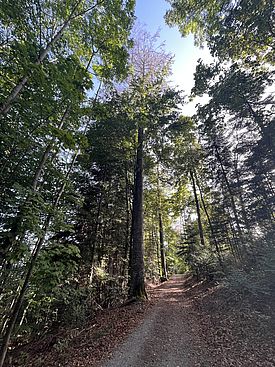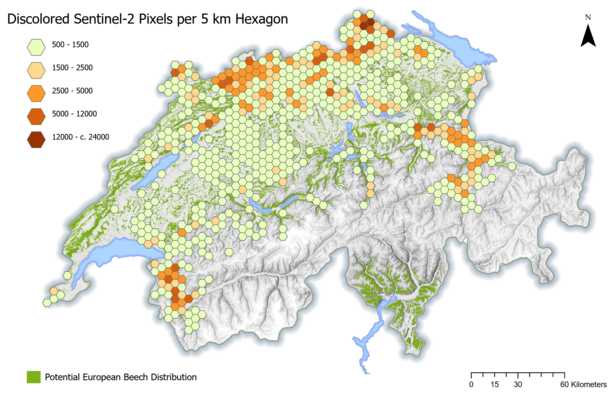DRAINS - DRought Assessment IN Swiss forests
Daniel Scherrer, Arun Bose, Colin Bloom, Tiziana Koch, Romana Paganini, Lorenz Walthert
2023 - 2025
FinancementProject Background ¶
As global climate changes, extreme heat and drought are expected to become more frequent across central Europe. Such extreme conditions add to forest stress and affect long term forest health. The two most common tree species in Switzerland, Norway Spruce and European Beech, appear particularly susceptible to these climatic changes. The combination of high mid-summer temperatures and low precipitation in 2018 resulted in widespread forest canopy discoloration across Switzerland and much of central Europe over the following year. Within two years, Beech and Spruce stands that experienced discoloration, were associated with increased crown die-back and increased susceptibility to insect infestation as compared to areas that did not experience discoloration resulting from the summer 2018 conditions.
Changes in forest health have direct implications for forest management practice, the economic viability of Swiss forests, preservation of biodiversity, and the natural aesthetic of Switzerland. While the outcomes of past extreme drought events become more evident year by year, the underlying factors which make some forest stands more susceptible to drought than others remain relatively unclear. In part, this is due to the limited spatial availability of accurate data with which to characterize site conditions that underly forest health on a local scale. Improved local information on soil water availability, natural species suitability, and exposure to past stressors, among other datasets, are required to appropriately characterize forest susceptibility to drought, and ultimately, manage Switzerland’s forests for the future.
To that end, the DRAINS team brings together a group with broad expertise in resource management, remote sensing, ecology, and hydrology to synthesize the latest spatially and temporally sensitive forest site characteristic data from across Switzerland and to project Swiss forest health into the future.
The ultimate goals of this multi-disciplinary approach are two-fold:
- To identify the underlying factors that affect Norway Spruce and European Beech susceptibility to extreme temperature and drought in Switzerland.
- To spatially model forest drought risk in Switzerland under a variety of expected site and climatic conditions.


